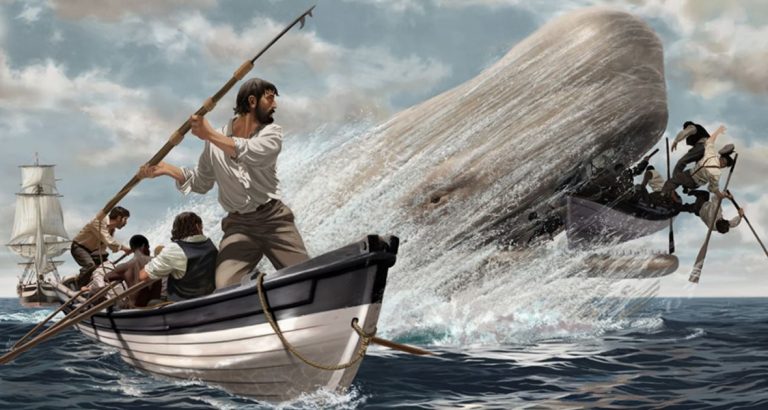Moby Dick has always been touted in our generation as the book of aspiring intellectuals. From when we first saw Matilda (in Matilda) reading the opening line ‘Call me Ishmael’, to later seeing Rory from Gilmore Girls with her head buried in her copy of the novel – it seems an essential read for not only smart people, but particularly smart women. It is considered one of the greatest novels of all time and has become the sort of book that you read so that you can say you read it. But reading it is no easy feat.
1. The length
When I talk about the length of Moby Dick, I refer not only to the amount of pages. After all, we are the generation that could read even the fattest Harry Potter books casually over a weekend. On average, it appears to take people up to three months to finish Moby Dick – if they finish at all. This story is deliberately slow-paced for the most part and requires dedication to finish in a timely manner. Whether you find it dull or genius, you too are embarking on a lengthy voyage.
2. The language
Even to those who do not struggle with the language – many will, save for those with a good background knowledge of Christianity, philosophy and generally more complex literature – some pages will need re-reading for better comprehension. Expect a lot of big words, the worst being the sadistic planting of ‘uninterpenetratingly’ in Chapter 108. The seemingly unnecessary wordiness of the novel as a whole can act as a major deterrent.
3. The format
Moby Dick is not just a story. In fact – it’s more like two. We have Ishmael pondering on life and relaying information on the whaling industry, interwoven with what is actually happening in his adventure. The effect is that it can feel like you’re stuck inside reading an encyclopaedia whilst everyone else is outside playing pirates. Many of the ‘facts’ about whales are entirely fictional, which causes us to question the veracity of the links between whales and mankind that can be derived from Ishmael’s observations. Supposedly, it began as an action/adventure novel until Melville was encouraged to bulk it out into a greater work and that’s probably why it seems to beat around the bush so much.
4. The philosophy
Yes, Moby Dick is about a whale. But it’s not really about a whale – as we are constantly reminded. Whales are used in many philosophical analogies and these can be both fascinating and absurd. A few of these may genuinely provide life-changing outlooks on life, but towards the end you may just think old Melville had been sniffing glue. However, his ability to draw on so many different cultures, religions and aspects of history gives the story a much wider reach than your average American novel, which works out in his favour.
5. The eroticism
Perhaps one of the more shocking aspects of the novel is the sexual imagery, which is far from just implied. From the beginning, we are provided with explicit homoerotic undertones in the relationship between two main characters. With many references to sperm whales and spermaceti (oil of the sperm whale), Melville couldn’t have made it more obvious. In fact, Chapter 94 depicts the men squeezing the sperm (oil) in their hands excitedly. However, this is not necessarily in favour of nor against homosexuality, but a commentary on how it is viewed within society – and probably one of the most interesting features of the novel.
Some of the coverage you find on Cultured Vultures contains affiliate links, which provide us with small commissions based on purchases made from visiting our site.

